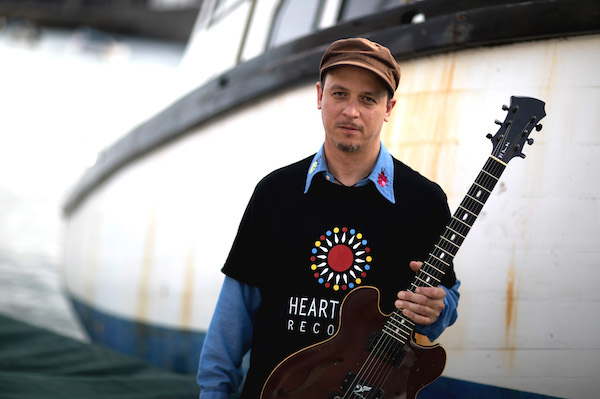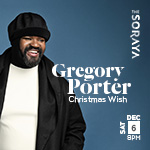Oct 28, 2025 10:47 AM
In Memoriam: Jack DeJohnette, 1942–2025
Jack DeJohnette, a bold and resourceful drummer and NEA Jazz Master who forged a unique vocabulary on the kit over his…

Kurt Rosenwinkel released Angels Around on his own label, Heartcore Records.
(Photo: Renato Nunes)Kurt Rosenwinkel was three dates into an eight-city tour of Sweden in mid-March. Asked where, exactly, he could only laugh. “Damn! Stumped me on the first question,” he deadpanned into the phone, before valiantly trying to pronounce Härnösand, a port city 425 kilometers north of Stockholm.
It was a Wednesday, and Rosenwinkel was playing trio dates in advance of his new album, Angels Around. His road band included Dario Deidda, the prodigiously gifted Italian bassist who appears on the album and composed the title tune, and drummer Mark Whitfield Jr., in the chair occupied by Greg Hutchinson on the recording. Hutchinson was supposed to have been on tour in Europe with Joshua Redman at the time, but was instead stuck at home in Rome—on coronavirus lockdown, just like the rest of Italy.
Angels Around—released through Rosenwinkel’s own label, Heartcore Records—is his second collection of trio standards, following 2009’s Reflections (Word of Mouth Music). But whatever the two albums might share in concept and instrumentation is overshadowed by a pointed difference in sound and strategy. Reflections drew heavily from the Great American Songbook, and took a fairly conservative approach to the material, with Rosenwinkel backed by bassist Eric Revis and drummer Eric Harland. “I was going for a more traditional guitar sound,” Rosenwinkel said. “I’m in a place that’s quite different from where I was when I recorded Reflections.”
That much is obvious from the first track. Angels Around opens with the Thelonious Monk tune “Ugly Beauty,” which on the original recording, from the 1968 album Underground, is played in slow, deliberate 3/4 time. “I believe it’s his only composition in 3,” the guitarist noted. But Rosenwinkel’s version does its best to hide that. The guitarist launches the tune with a dreamy eighth-note figure in D-flat, with the top note moving from the major seventh to the sixth; the downbeat doesn’t become obvious until the bass and drums enter, and even then, the waltz feel that Monk used is undercut by Deidda’s tango-style bass line, which puts equal emphasis on beats 1 and 3.
Deidda’s performance on the tune was informed by his experiences with Argentine musicians in Europe who taught him about bolero, chaquarera and tango. “I tried that bass line and Kurt liked it immediately,” Deidda explained via email. “I believe it is a line influenced by the Argentine bolero and the Cuban cha-cha. And the interesting thing is that it sounds good on a groove that Greg played that is more of a marching rhythm.”

Jack DeJohnette boasted a musical resume that was as long as it was fearsome.
Oct 28, 2025 10:47 AM
Jack DeJohnette, a bold and resourceful drummer and NEA Jazz Master who forged a unique vocabulary on the kit over his…

D’Angelo achieved commercial and critical success experimenting with a fusion of jazz, funk, soul, R&B and hip-hop.
Oct 14, 2025 1:47 PM
D’Angelo, a Grammy-winning R&B and neo-soul singer, guitarist and pianist who exerted a profound influence on 21st…

To see the complete list of nominations for the 2026 Grammy Awards, go to grammy.com.
Nov 11, 2025 12:35 PM
The nominations for the 2026 Grammy Awards are in, with plenty to smile about for the worlds of jazz, blues and beyond.…

Jim McNeely’s singular body of work had a profound and lasting influence on many of today’s top jazz composers in the U.S. and in Europe.
Oct 7, 2025 3:40 PM
Pianist Jim McNeely, one of the most distinguished large ensemble jazz composers of his generation, died Sept. 26 at…

Drummond was cherished by generations of mainstream jazz listeners and bandleaders for his authoritative tonal presence, a defining quality of his style most apparent when he played his instrument unamplified.
Nov 4, 2025 11:39 AM
Ray Drummond, a first-call bassist who appeared on hundreds of albums as a sideman for some of the top names in jazz…






